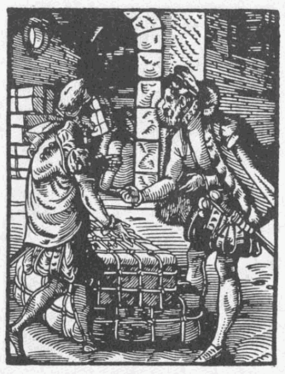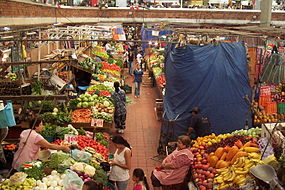How many pounds equal a ton?0 comments Thursday 8 July 20101 long (or gross) ton = 2240 pounds (UK) 1 short (or net) ton = 2000 pounds (US) 1 tonne (i.e., a metric ton) = 2204.6 pounds In the United States, when people say "a ton," they're thinking the short ton, or 2000 pounds. Source: Wiki Answer What is FOB, CIF, C&F0 commentsWhat is FOB price? Free on board (FOB). This pricing term indicates that the cost of the goods, including all transportation and insurance costs from the manufacturer to the port of departure, as well as the costs of loading the vessel are readfiled in the quoted price. This means that the buyer has to bear all costs and risks of loss of or damage to the goods from that point. The FOB term requires the seller to clear the goods for export. NOTE: "FOB Price does not include Shipping freight and Insurance charges" --o0o-- What is CIF? "Cost, insurance and freight" means that the seller delivers when the goods pass the ship's rail in the port of shipment. The seller must pay the costs and freight necessary to bring the goods to the named port of destination but the risk of loss of or damage to the goods, as well as any additional costs due to events occurring after the time of delivery, are transferred from the seller to the buyer. However, in CIF the seller also has to procure marine insurance against the buyer's risk of loss of or damage to the goods during the carriage. NOTE: "CIF Price Includes the Vehicle Price + Shipping freight + Insurance Cost". --o0o-- What is C & F ? Free on board (FOB). This pricing term indicates that the cost of the goods, including all transportation and insurance costs from the manufacturer to the port of departure, as well as the costs of loading the vessel are readfiled in the quoted price. "Cost and Freight" - commercial term meaning that the stated value of a shipment of goods includes all costs and freight involved in shipping the goods to their destination. NOTE: C & F Price Includes the Vehicle Price + Shipping freight to the port of your country. --o0o-- Who is a Shipper? Shipper is an Owner of the cars. Who contracts delivery with carriers. --o0o-- Who is a Consignee? Consignee is Receiver on BL. Responsible to pick up the carriage after unloaded. --o0o-- What is "B/L"? B/L - Bill of Lading Official Legal document signed by the captain, agents, or owners of a vessel, furnishing written evidence of the quality and quantity of cargo for the conveyance and delivery of marchandise sent by sea to a specific destination. It represents ownership of cargo between shipper and carrier. What is a T/T payment? What is L/C?0 commentsT/T means telegraphic transfer, or simply wire transfer. It's the simplest and easiest payment method to use. T/T payment in advance is usually used when the sample and small quantity shipments are transported by air. The reason why is that the documents like air waybill, commercial invoice and packing list will be sent to you along with the shipment by the same plane. As soon as the shipment arrives, you can clear the customs and pick up the goods with the documents. As it's acknowledged, T/T payment in advance presents risk to the importer if the supplier is not an honest one. The L/C payment procedure is usually as follows:
L/C is used for the larger quantity order shipped by sea. The typical L/C scenario takes 14-21 days to complete. When and what the documents will I received when buying online?0 comments Wednesday 7 July 2010
Standard you will receive the following documents:
- At least 3 original and 2 copy's of the Bill of Lading; (view example here) NB: terms and conditions may change over the period of market growth How long is the delivery time?0 comments Monday 5 July 2010
Under normal circumstances the delivery time will be about 4-6 weeks for garden furniture and 6-8 weeks for indoor furniture (for "custom made" items it might be max. 4 weeks longer) after receipt of the down payment/LC (see also: "What are the payment methods"), before shipping, for a 40FT/40FT HC container.
How much should I order to have a container filled?0 comments Sunday 4 July 2010
If you receive a quotation from market online, the volume of every item will be mentioned, and total volumes will be calculated after filling in the desired quantity, as well as a percentage for each type of container which shows how full a container will be with the selected items and their quantity. For your information, please find below some container details:
The maximum weight will never be exceeded if a container is filled with only furniture. What are the payment method at online market?0 comments Saturday 3 July 2010
The total payment is split in a down payment and a balance payment.
Down payment: Where most exporters require a down payment which is a certain percentage of the pro forma invoice (normally at least 30% up to 50%), seller are tried to keep it more simple with a fixed down payment of US$ 2000/20FT Container, or US$ 4000/40FT (HC) Container, or equivalent regardless of the total value of the products to be loaded. This means that under normal circumstances the amount of the down payment will be much lower than using a certain percentage. As soon as the down payment has been received, seller will proceed with your order, and keep you updated about the progress. Balance payment: For payment of the balance payment there are two possibilities:
How packaged goods if bought online?0 comments Friday 2 July 2010
standard packing method is the use of single face wrapping carton, except if such would cause in any risk for damage. However on request and against cost price of the market or buyer, the goods will pack in carton boxes, with or without direct printing. Some items are standard packed in boxes (like reclinable chairs, deckchairs) to avoid damage, others are in fact never packed in boxes (for instance assembled benches, assembled indoor furniture etc.). Please keep in mind that packing in boxes will decrease the load ability of any type of container with approximately 15%.
At the other side, carton boxes enables the products to be stacked easier, and the level of damage risk is practically nil. knowledge about Trade0 comments Thursday 1 July 2010Trade is the voluntary exchange of goods, services, or both. Trade is also called commerce or transaction. A mechanism that allows trade is called a market. The original form of trade was barter, the direct exchange of goods and services. Later one side of the barter were the metals, precious metals (poles, coins), bill, paper money. Modern traders instead generally negotiate through a medium of exchange, such as money. As a result, buying can be separated from selling, or earning. The invention of money (and later credit, paper money and non-physical money) greatly simplified and promoted trade. Trade between two traders is called bilateral trade, while trade between more than two traders is called multilateral trade. Trade exists for man due to specialization and division of labor, most people concentrate on a small aspect of production, trading for other products. Trade exists between regions because different regions have a comparative advantage in the production of some tradable commodity, or because different regions' size allows for the benefits of mass production. As such, trade at market prices between locations benefits both locations. Retail trade consists of the sale of goods or merchandise from a very fixed location, such as a department store, boutique or kiosk, or by mail, in small or individual lots for direct consumption by the purchaser.[1] Wholesale trade is defined as the sale of goods or merchandise to retailers, to industrial, commercial, institutional, or other professional business users, or to other wholesalers and related subordinated services.[2] Trading can also refer to the action performed by traders and other market agents in the financial markets. Source: wikipedia
Subscribe to:
Posts (Atom)
Blog Archive
FeedjitTotal Pageviews
Powered by Blogger.
|



